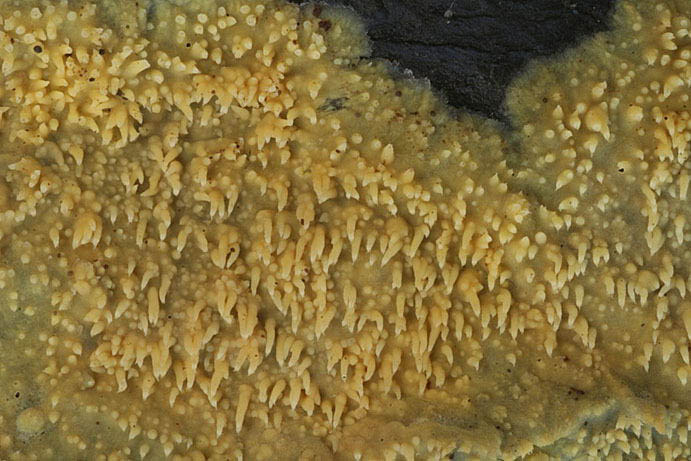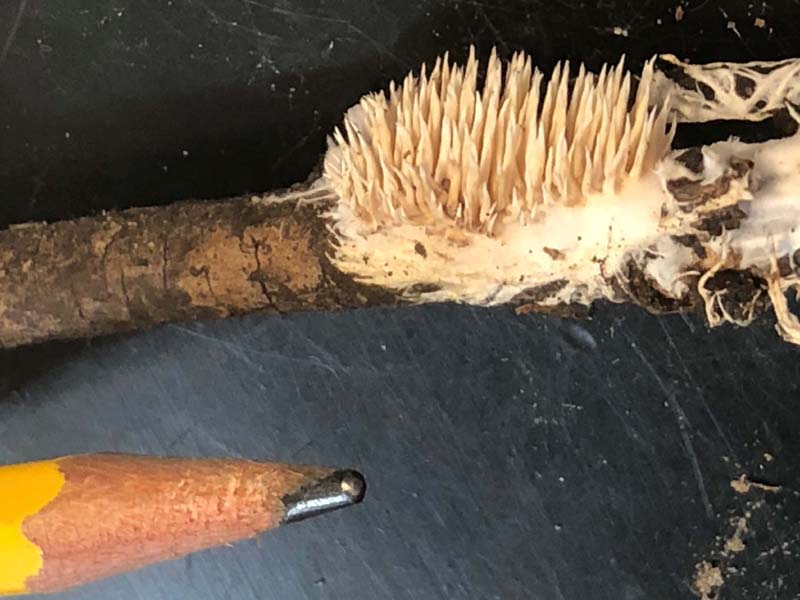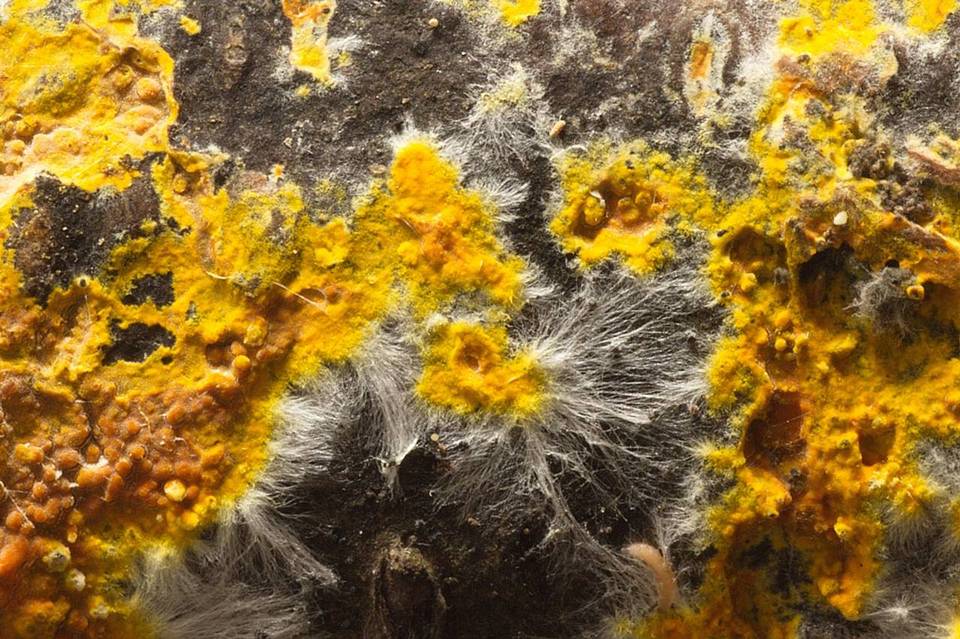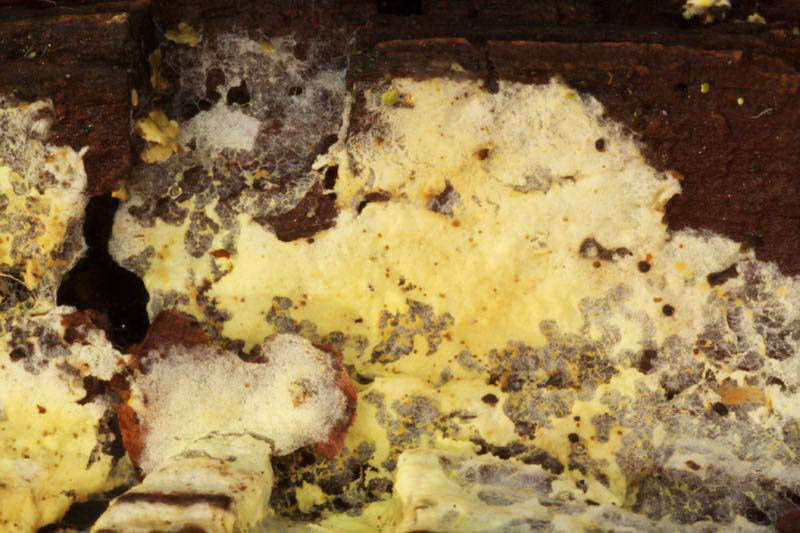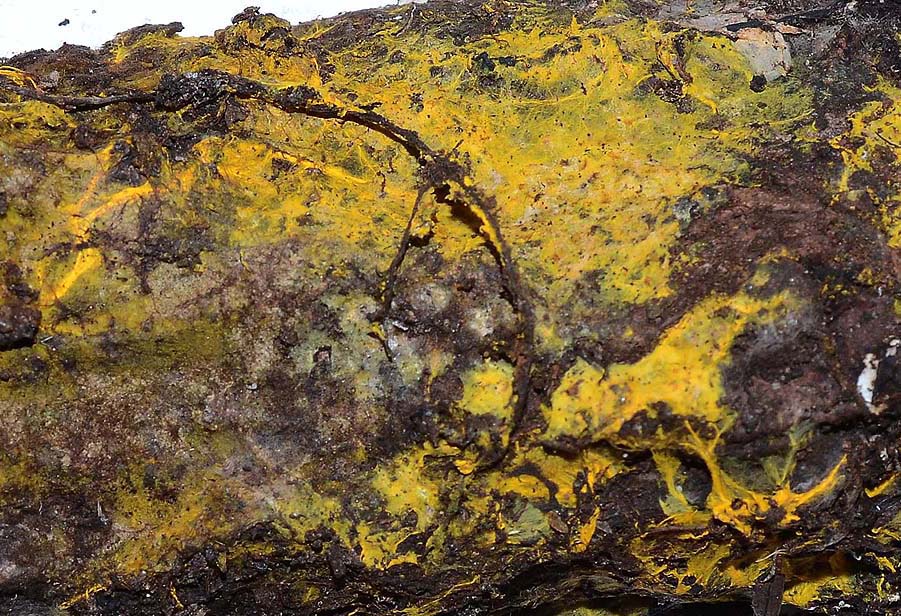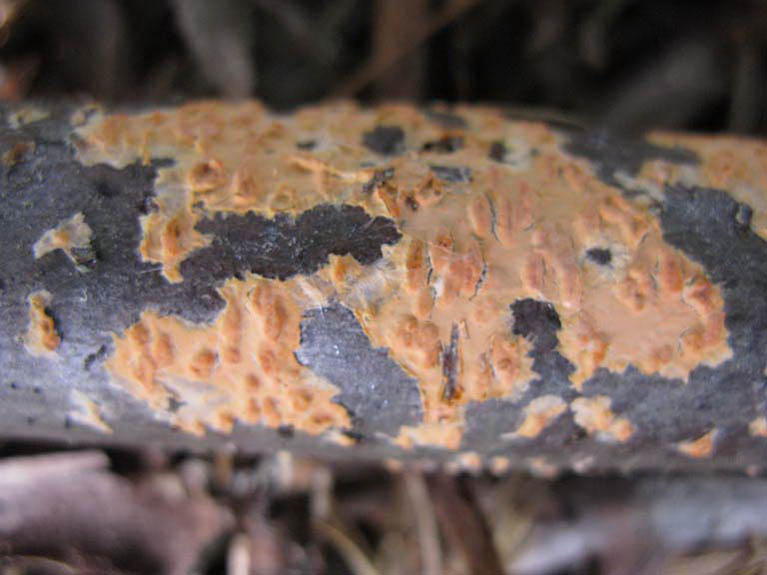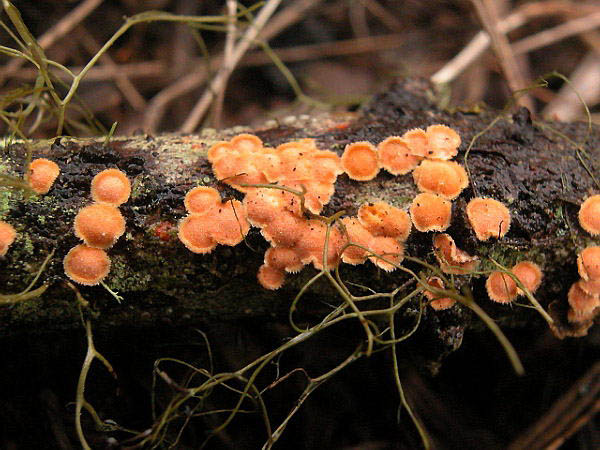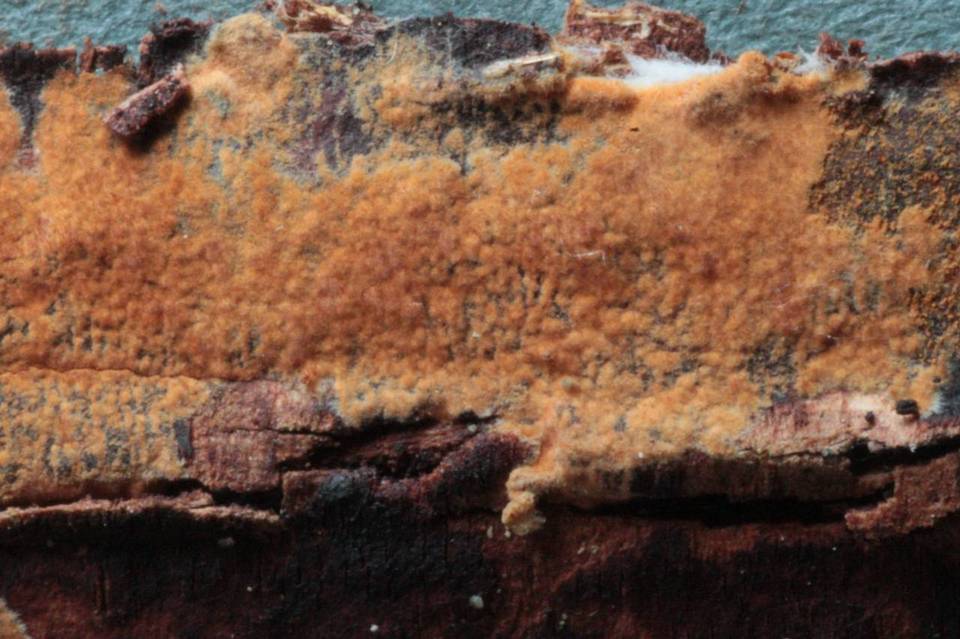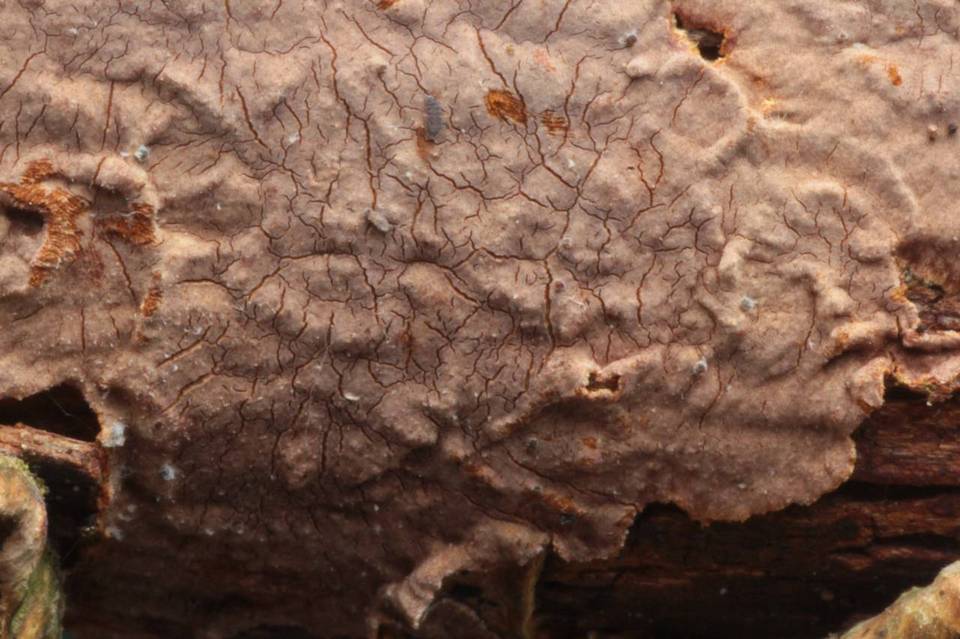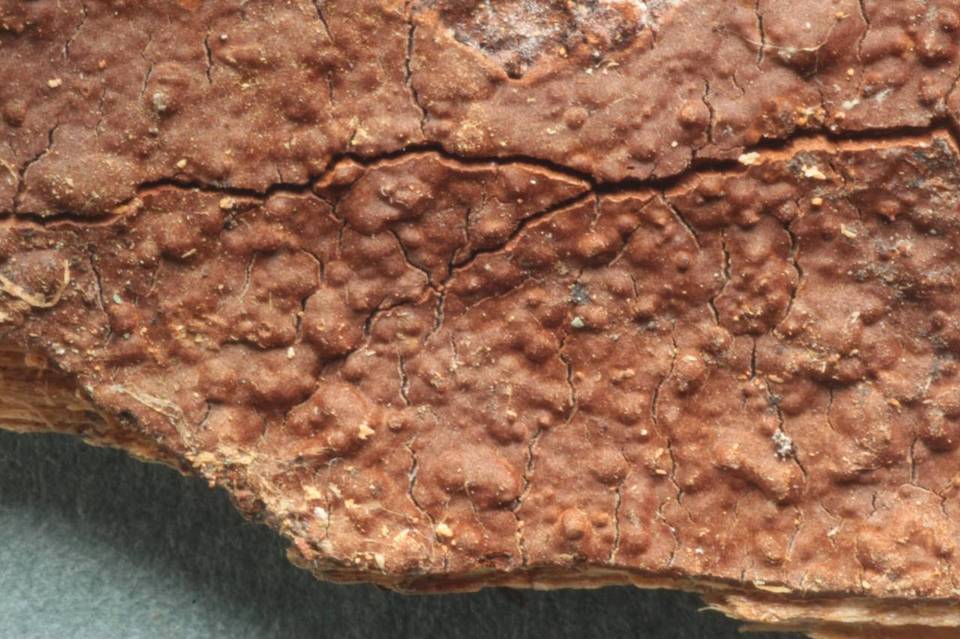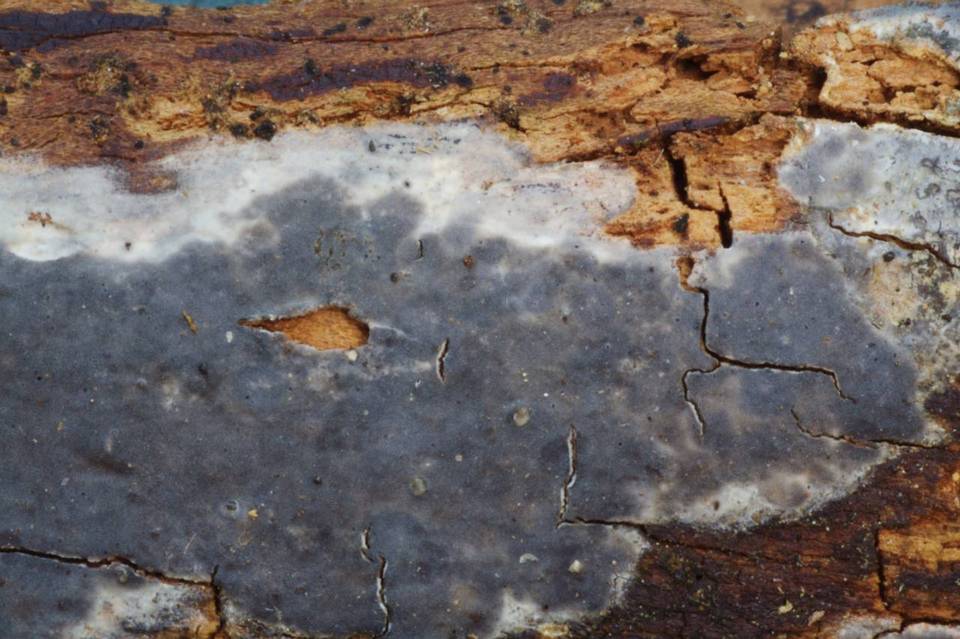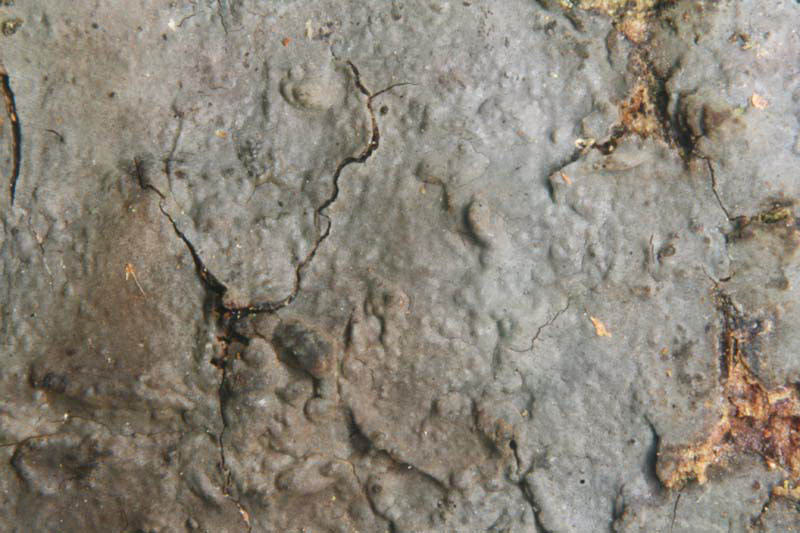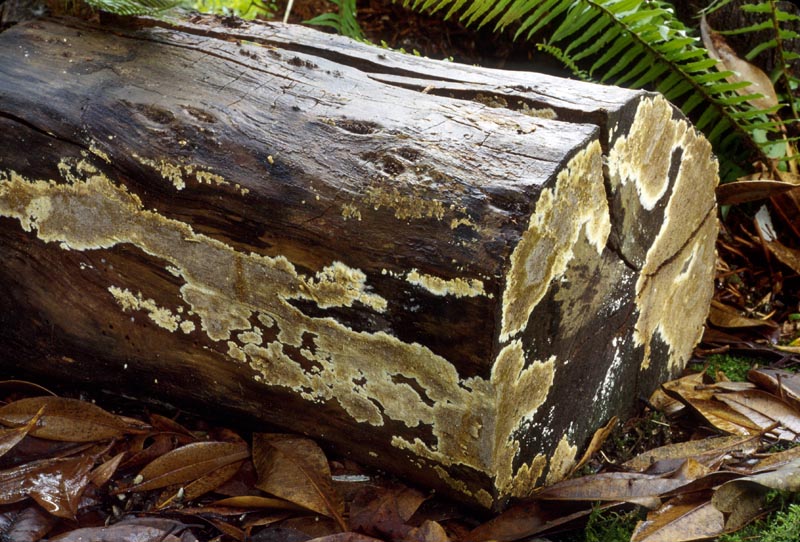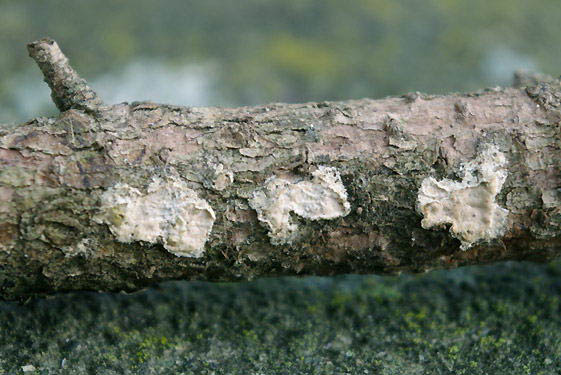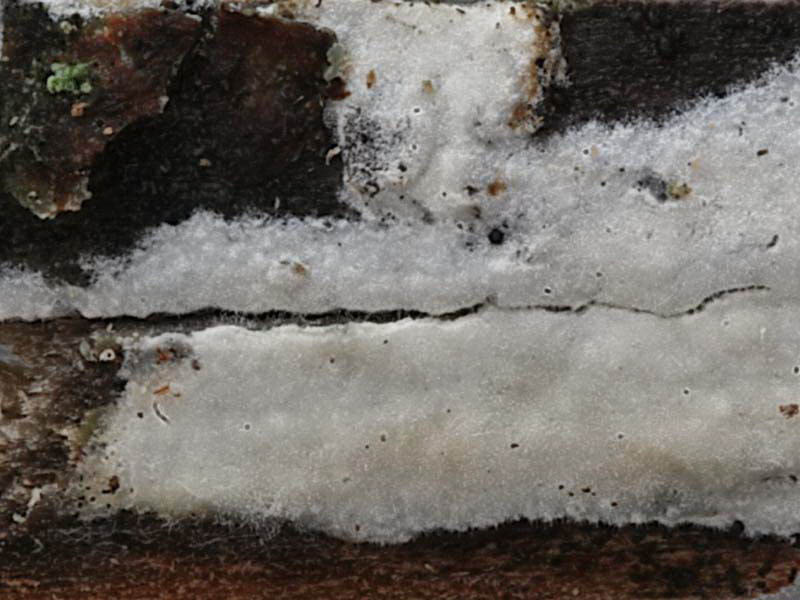Crusts
Mushrooms that are individual teeth that hang down have their own
category, teeth, and mushrooms with longer individual
spines rising upwards are in the club and
earth tongue categories. This category is for
flat or wrinkled surfaces or surfaces with small teeth <3mm embedded in a flat
surface. I have not yet noted as many distinctive microscopic features
as I do on other pages (such as amyloid or ornamented spores). Thorough coverage
of the crusts is beyond the scope of this key. What follows is an overview of
some of the more distinctive species.
Exceptions: Crusts that belong elsewhere:
Kretzschmaria deusta - Ascomycota
"flask" with sometimes difficult to
detect pimples. Dual tone white and grey, aging to black. Hardwoods.
Inonotus obliquus - "chaga", on
birch,
actually a polypore but it is without pores in its asexual stage. It bulges
out more than other crusts.
Apiosporina morbosa - black knot of cherry - a black crust surrounding branches of cherry and plum
trees. In a different class than any other
mushroom on these pages - the Dothideomycetes.
Trichoderma sp. - actually a flask,
but often a non-pimpled fuzzy mold, that appears to
turn blue-green when the white surface is scratched. On wood.
Claviceps purpurea -
also a flask, parasitizes rye
and other grasses, starting as a dark purplish
crusty
sclerotia.
Lichens (covering perhaps 6% of the earth's land surface!) resemble crusts,
but are unrelated Ascos. A lichen is the symbiosis of a fungus and green
algae or cyanobacteria. Don't be fooled by a lichen that resembles a
crust fungus (or even a cup or coral fungus). They will often have some
shade of green. Lichens are not covered by these
keys.
Most crusts are
saprophytic, although some could potentially be parasitic, and a very few
interesting species may grow on the ground instead of wood and actually be
mycorrhizal, even when they are found on wood! (Such as Piloderma and
Byssocorticium). As you will see,
almost every branch of the mushroom family tree has a crust in it. No matter how
complicated a mushroom has become, it probably has a primitive relative that started
out as a simple crust.
Key to Crusts:
Cap - wrinkled surface: First we have the species that are
not entirely resupinate, but also have a cap bending away from the wood,
called effuso-reflexed or semi-resupinate. Underneath the cap (and the
entire surface that is on the wood) is not smooth, but wrinkled,
veined or covered
in tiny teeth. The first three are in the Polyporales and may represent
intermediate evolutionary steps on the way to evolving
pores. Ditto for Pseudomerulius which is related to boletes (Boletales). Plicatura and Plicaturopsis are distant relatives of gilled
mushrooms (Agaricales), and may represent intermediate evolutionary steps on the way to
evolving gills.
Phlebia tremellosa - wriggly jelly,
pinkish, almost pore-like.
5-25cm. Other species are resupinate.
Byssomerulius (Meruliopsis) corium - white on hardwood
sticks, edges hanging off. Wrinkled underneath, faintly
zoned above. 5-10cm. Other species are
resupinate.
Steccherinum ochraceum - white to orange-brown
cap and teeth, toothed underside. Caps stick out ~1cm.
Other species are resupinate.
Plicatura nivea - white to beige, wrinkled
or blunt ridges less defined than Steccherinum teeth. Hardwoods.
Caps extend 1-3cm.
Plicatura crispa (Plicaturopsis crispa) - orange brown cap, veined
underneath like chanterelles. Hardwoods. <2.5cm
Pseudomerulius - bright orange, also resupinate
with other lookalike species, see below.
Cap - Smooth: a cap
peels away from the flat surface, but the underside and part that lies flat on
the wood is smooth or almost completely so.
Stereum - the most common genus in this category by
far, recognized by a bright orange or dull orange-tan underside
and flat surface, as well as a somewhat hairy, orange, concentrically zoned
cap. They grow most often on hardwoods. Some are called false turkey tails
because of their resemblance to Trametes
(which are pored underneath). These are related to the
Russulas (Russulales).
S. hirsutum - bright orange underneath,
hardwoods, <3cm wide, 1-2mm thick
S. complicatum - bright orange, thinner, <0.5mm,
more wrinkled edges. Hardwoods.
S. ochraceoflavum - duller, also thin,
barely orange, on smaller pieces of hardwood. Edges
fringed.
S. sanguinolentum - dull, barely orange,
resupinate on conifers, stains red when scratched. Much like
Phanerochaete.
S. gausapatum - bright, red bleeding resupinate on oak
S. rugosum - dull, red bleeding resupinate on other hardwoods
S. subtomentosum - dull orange, almost a
bracket, often with a single point of attachment to the wood,
stains yellow-orange when fresh and scratched. Up to 5-7cm. Hardwoods.
Other colours:
Hymenochaetopsis (Pseudochaete) tabacina - orange-brown zoned cap
like Stereum with possible white margin, tobacco, coffee brown underneath.
(Hymenochaetales with setae like
Phellinus) Hardwoods, projecting <2cm.
Hymenochaete rubiginosa
- less resupinate, oak, red- to grey-brown. Others are resupinate.
These turn black in KOH.
Veluticeps fimbriata - brown cap, grey
under on barkless conifers, projecting <4cm. In the
Gloeophyllales.
V. abietina
- caps angled down sharply. (Gloeophyllales)
Amylostereum - conifers, similar (Russulales)
Chondrostereum purpureum - violet underneath,
fading in age, on hardwood, projecting <2cm.
(Agaricales) Related to the gilled mushroom
Marasmius!
Laxitextum bicolor - brown cap with a pale rim, white
underneath, not very tough.
Resupinates: These mushroom lie entirely flat on the wood,
with no cap sticking out.
Resupinate - Staining: When you touch
or scratch these crusts, or in age, they change colour.
Phanerochaete sanguinea - on conifers, turns red
without being touched, but irregularly so it looks like its a staining
reaction.
Even when P. sanguinea is not fruiting, the presence of
the mycelium stains wood red! Much like
Chlorociboria stains wood
blue. (Polyporales)
Stereum sanguinolentum - on conifers,
only turns red where scratched, the wood itself is not red. (Often with a
cap too).
Peniophora polygonia - pinkish white crust,
staining red-brown when rubbed, not blood red. (Russulales)
Eichleriella deglubens
- a similar pink, slightly warty more spread out crust on
hardwoods that turns wine-red when injured. (Auriculariales)
Resupinate - Wrinkled: folds,
veins, ridges, or perhaps tall irregular
projections, but not individual spines or teeth.
Phlebia etc. - Phlebia is a relative of the
Polyporales, and has a waxy or
jelly-like consistency. The last six unrelated species may also be soft, but
are not quite as
jelly-like or waxy as Phlebia.
Phlebia radiata - orange or purple, ridges
radiate away from a central point.
P. rufa - hardwoods, wrinkled to poroid, never
radially, yellow to reddish brown.
P. livida - only occasionally with tall irregular
projections, else smooth-ish, reddish-violaceous.
Pirex concentricus - related to Phlebia, chrome yellow and
brown tones, turns red in KOH
Peniophora rufa - little red tree brains,
but not gelatinous like some similar
mushrooms. Hardwoods. (Russulales)
Ceraceomyces serpens - ochre to pink, convoluted.
(Agaricales)
Serpula/Meruliporia - dry rot - sometimes found
indoors, able to produce its own moisture and attack dry wood (uh
oh!)
(Boletales)
Leucogyrophana - white cottony edge, found
outside. Similar to Serpula. (Boletales)
Pseudomerulius - without a white edge, sometimes
lifting off the wood like a cap. (Boletales)
Cytidia salicina - red, bumpy surface, less
isolated than Peniophora rufa.
Hardwoods. (Corticiales)
Resupinate - Teeth: a collection of
individual spines sticking up taller than they are wide. Small
bumps are far too common to be able to cover here.
Mucronella is usually considered to be a
cluster of individual clubs and is found on that page, but might be seen as a
crust and looked for on this page.
Basidioradulum radula - long, blunt teeth, beginning as
circular patches.
(Hymenochaetales).
Kavinia alboviridis - long, sparse spines,
greenish tinged on a white mycelial mat. Other species are
white. (Gomphales)
Mycoacia fuscoatra, etc. - especially waxy
crust, usually somewhat colourful. Hardwoods. Related to Phlebia.
(Polyporales)
Dentipellis fragilis - white with especially long teeth (~1cm) (Russulales)
| Cristinia eichleri (gallica) - bright
yellow with blunt, irregular
teeth. (Agaricales) Steccherinum ochraceum
- see above in effuso-reflexed, sometimes a
resupinate.
Steccherinum fimbriatum - pinkish
lilac, fringed, many small bumpy teeth. (Polyporales)
|
| Other genera with pale tooth crusts
are found in many different orders: Polyporales (Dacryobolus), Hymenochaetales (Asterodon, Hyphodontia),
Cantharellales (Sistotrema), Auriculariales (Protohydnum) and
Trechisporales (Trechispora). It is not practical to try and
separate them macroscopically. |
Resupinate - smooth-ish, waxy-gelatinous:
like the jellies, soft and gelatinous or
perhaps waxy, but unlike the jellies, lying flat as a crust on the wood.
Many of the species described earlier on this page are soft and waxy, but they
also have some other distinguishing features.
| They are found in many different
orders: Auriculariales (Basidiodendron, Eichleriella, Exidiopsis,
Stypella), Sebacinales (Sebacina), Cantharellales (Ceratobasidium,
Sistotrema, Tulasnella), Dacrymycetes-Dacrymycetales (Cerinomyces),
Polyporales (Hyphoderma, Phlebia, Phlebiopsis, Xenasma),
Agaricales (Radulomyces), Hymenochaetales (Peniophorella,
Repetobasidium, Resinicium, Tubulicrinis) Russulales (Gloeothele,
Peniophora).
They are relatively rarely collected and difficult to tell apart. |
Resupinate - smooth-ish, colourful:
May be smooth or bumpy, but the bumps are not taller than they are
wide. They are colourful or dark instead of off-white. There are
dozens if not hundreds of pale yellow, orange and grey species, so you have to
be pretty bright or dark to make the cut here. This is only a small sampling,
there are many others occasionally found.
Phlebia subochracea - waxy, not as wrinkled as
other Phlebias, which you should also
consider. Hardwoods.
Xenasmatella vaga (Phlebiella sulphurea) is very
similar but cottony. (all Polyporales)
Tomentellopsis echinospora - yellow and
cobwebby.
Tomentella and Pseudotomentella spp. are
often
brown cobwebby. Amaurodon spp may be greenish. (all Thelephorales)
Piloderma fallax - yellow threads. The
rhizomorphs are yellow and thick enough to see! (Atheliales)
This order has many wispy-looking spp, mostly white.
Byssocorticium spp in this order may be blue-green.
Cytidia salicina - red, bumpy surface, less
isolated than Peniophora rufa.
Hardwoods.
Corticium/Erythricium spp. may be pink. (all
Corticiales)
Peniophora aurantiaca grp - orange with bumpy
areas. Hardwoods. (Russulales)
Aleurodiscus grantii - orange fringed discs,
on true fir, resemble cup fungi. (Russulales).
<5mm
Hymenochaete cinnamomea - bright, rusty. (Hymenochaetales
- has setae like related Phellinus and Inonotus spp. and all turn black
in KOH). Hardwoods.
H. corrugata - areolate, dark brown crust.
Hardwoods.
H. fuliginosa - dark brown, less areolate.
Amylostereum (Russulales) - grey brown, on
conifers.
Acanthophysellum lividocoeruleum - dark greyish blue.
(Russulales)
Peniophora cinerea - hardwoods. Grey.
(Russulales)
P. nuda/pithya/etc. - pinkish-violet grey. Also see below.
Coniophora - (wet rot) - ochre-brown, smooth to
bumpy, can attack wet timber (Boletales)
|
Phanerochaete
sanguinea, above, will be colourful if the red staining has already
occured. Tulasnella spp. (Cantharellales),
Xenasma
(Polyporales), Oliveonia (Auriculariales) and Helicobasidium
(Pucciniomycetes - a "rust") may be lilac to purple mixed
with grey like Peniophora, but are soft and waxy. |
Resupinate - smooth-ish, pale:
Smooth or bumpy, with bumps that are not taller than they are
wide. Pale crusts are probably the most difficult of all mushrooms in the world to identify. There are hundreds of them, and they pretty much all look
the same. Some are waxy, some are fringed at the margin or wispy throughout the
crust, but as it says in Fungi of Switzerland volume 2/#239,
"Identification of the species described here on the basis of purely macroscopic
features is scarcely imaginable". You're going to need a microscope and a lot of
practice with it to be able to identify mushrooms in this group. You might
choose to do what many people do - decide that these are "not really
mushrooms" and outside your scope of interest.
It is remarkable just how many different
orders contain independently evolved
similar looking crusts. One can certainly think of a crust as a basal form for many
different kinds of mushrooms - Agaricales, Russulales, Boletales, Polyporales,
Hymenochaetales, Gloeophyllales, Corticiales, Thelephorales, Cantharellales,
Auriculariales, Gomphales, Sebacinales, Atheliales, Trechisporales - more than
any other similar looking group.
For now, these are mostly beyond the scope of these pages.
Aleurodiscus penicillatus is sometimes
recognizable as small pale pinkish white patches a few mm
or so each on small twigs. Turns black in iodine. (Russulales)
"Identification of the species described here on the
basis of purely macroscopic features is scarcely imaginable" - Fungi of Switzerland
Volume 2/#239
There is nothing local, but
Fungi Europaei Volume 12 Corticiaceae s.l. by Bernicchia and Gorgón
has ~425 colour photographs and ~450 microscopic feature drawings of crusts from
Europe, many of which appear here, and it is considered one of the bibles of
crusts. Remarkably, it is in English. The other important general work is the already mentioned Volume 2 of
Fungi of Switzerland,
available as an option entirely in English.
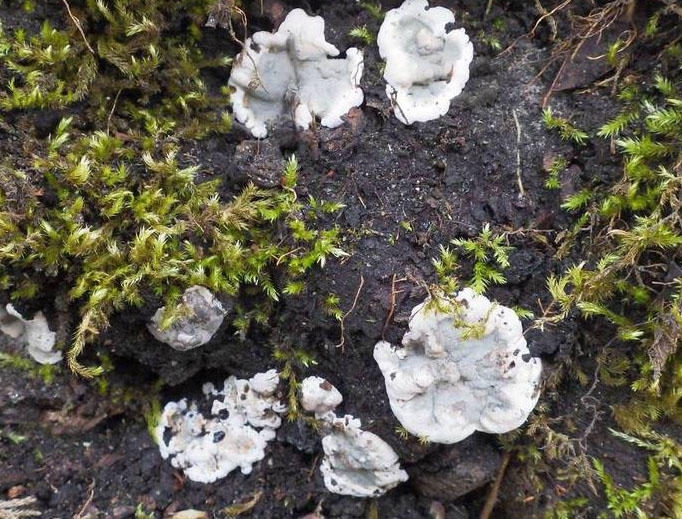
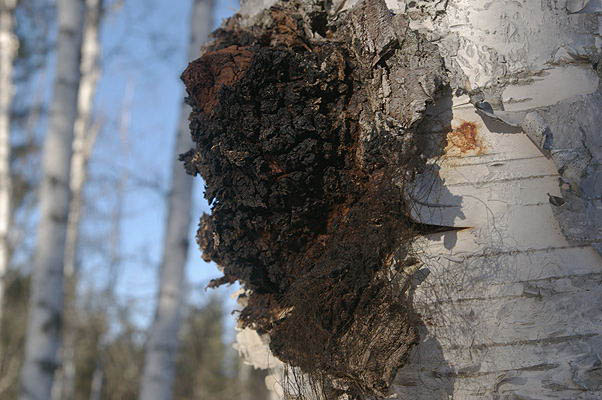
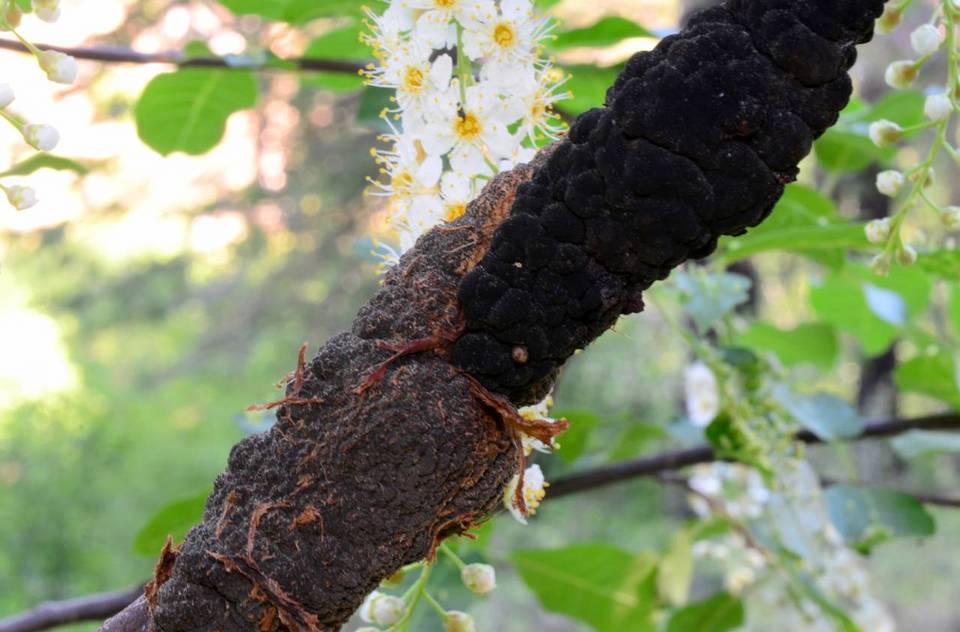
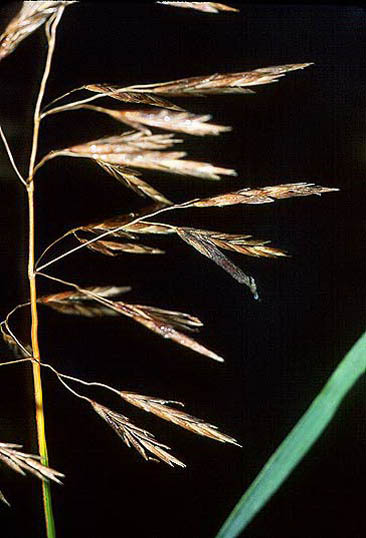
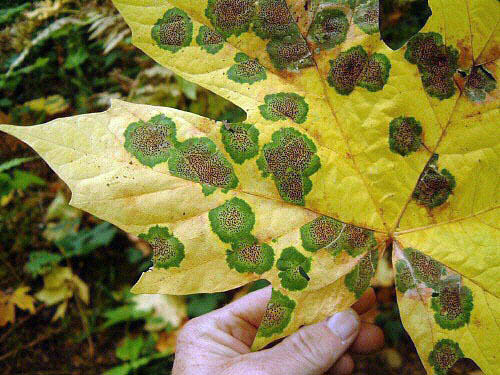
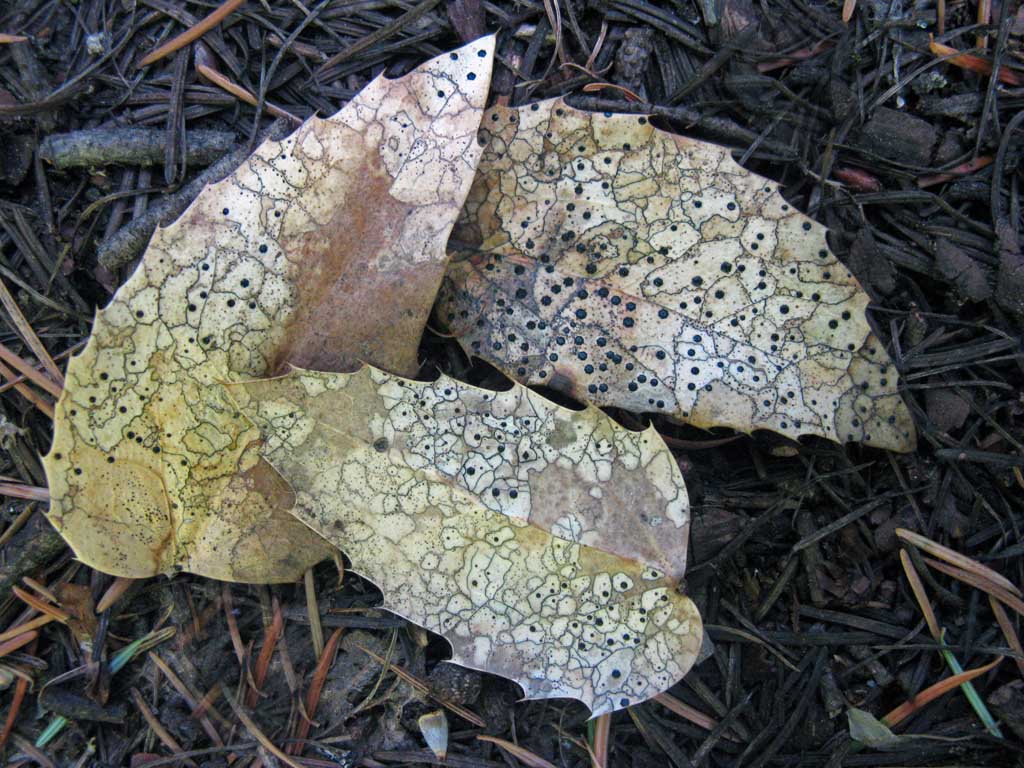
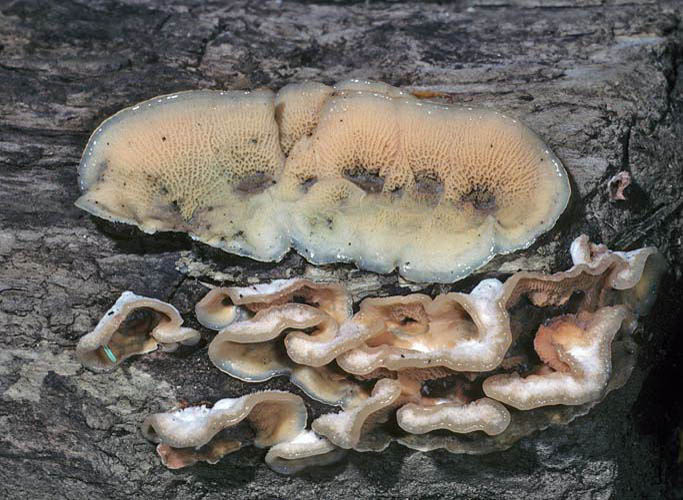
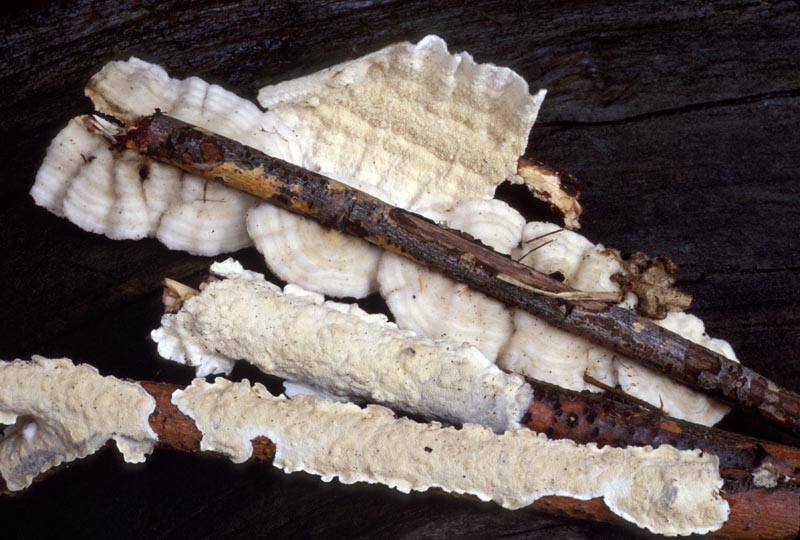
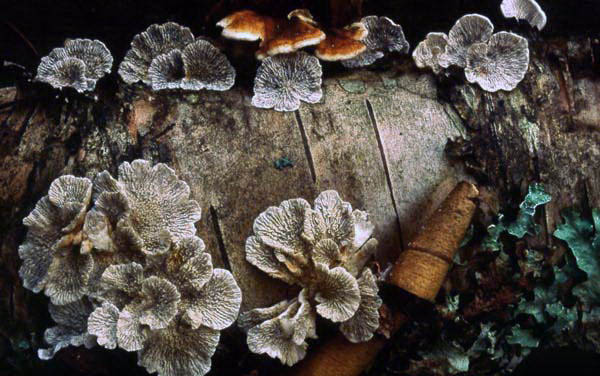
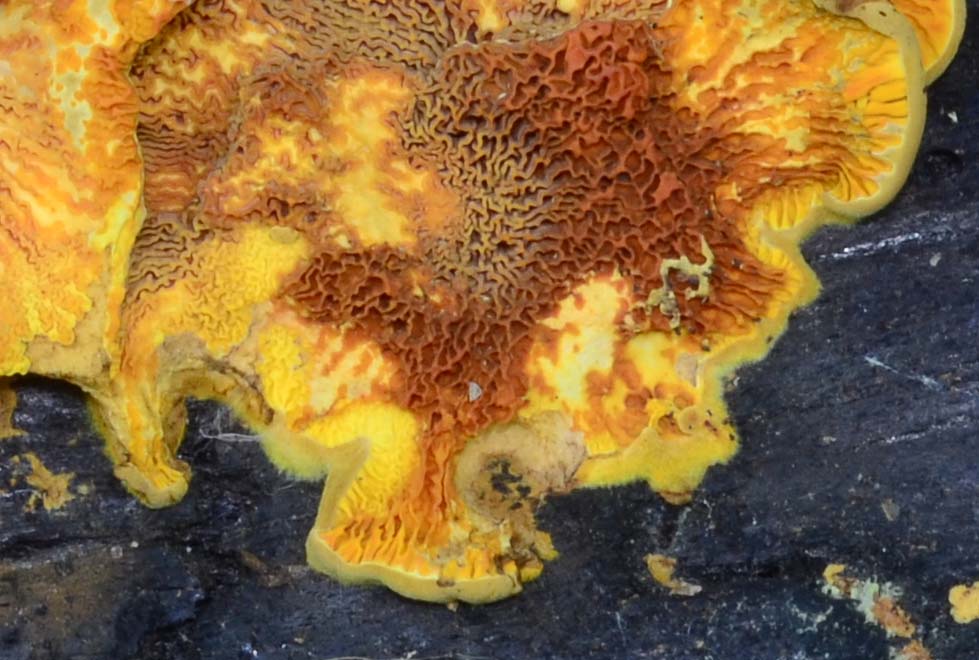
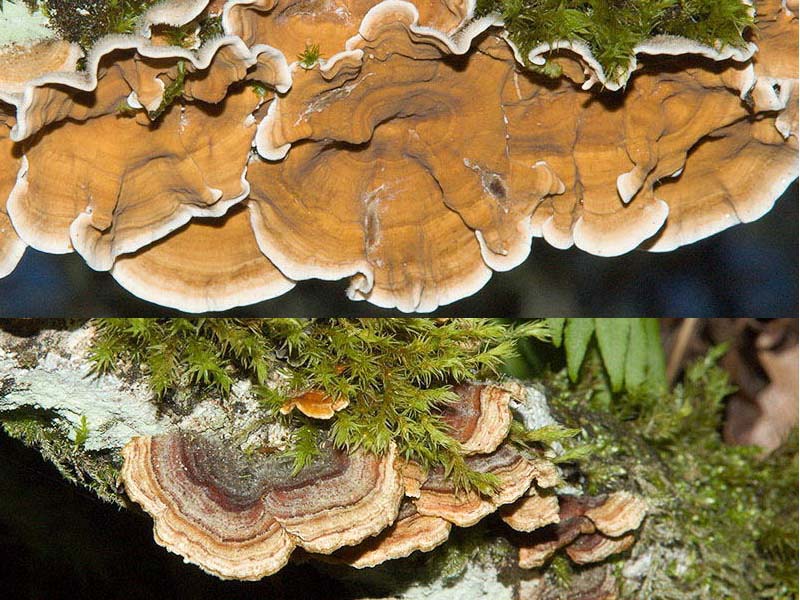
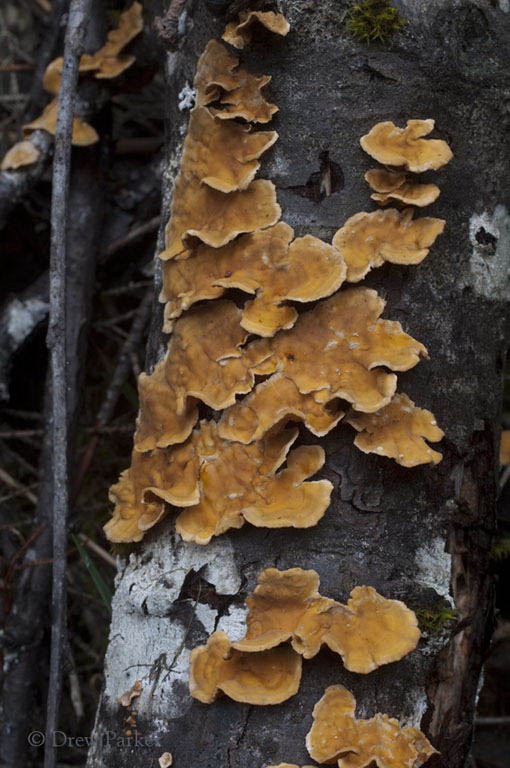
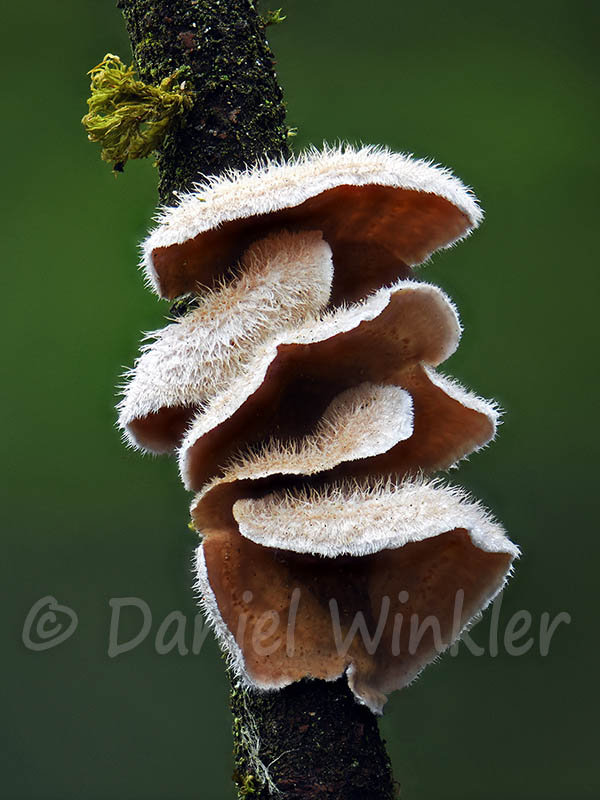
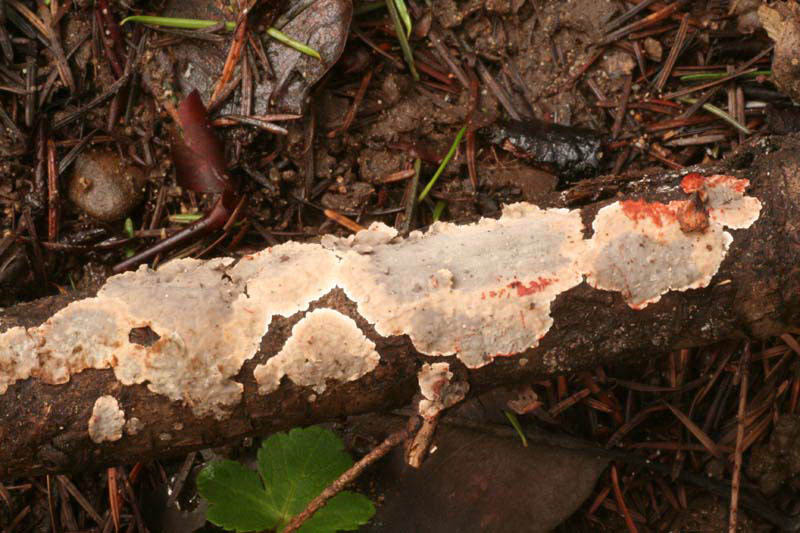
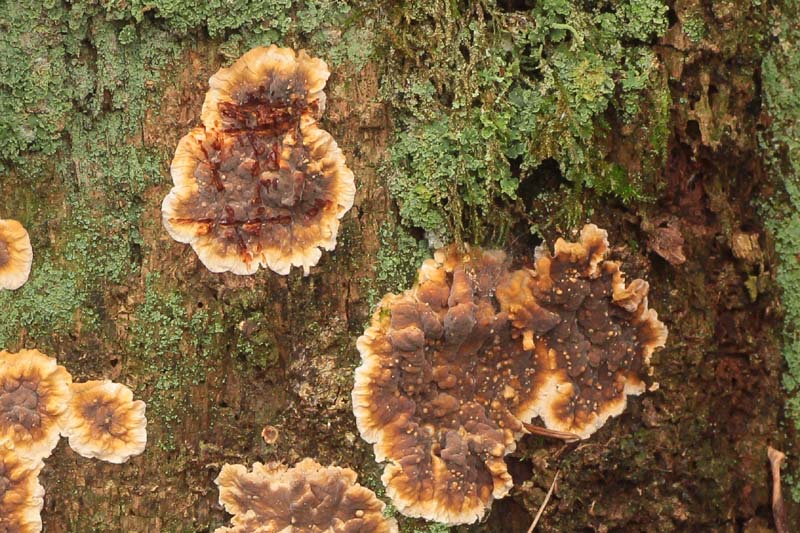
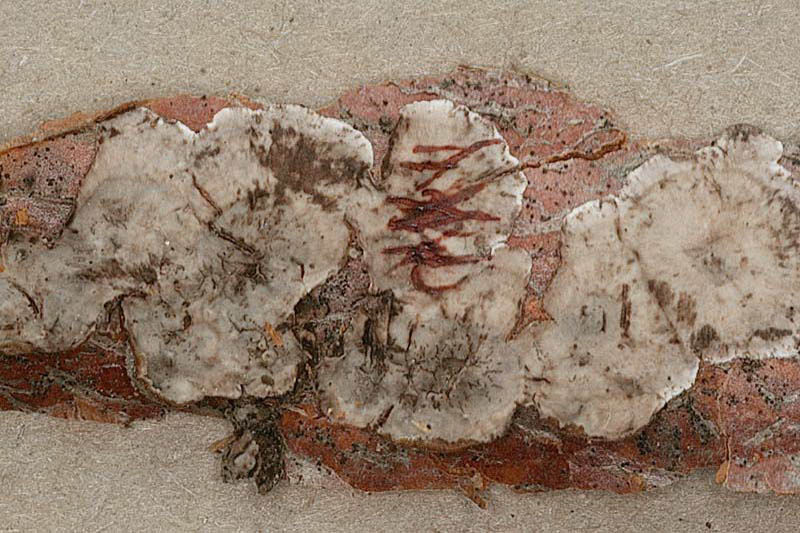
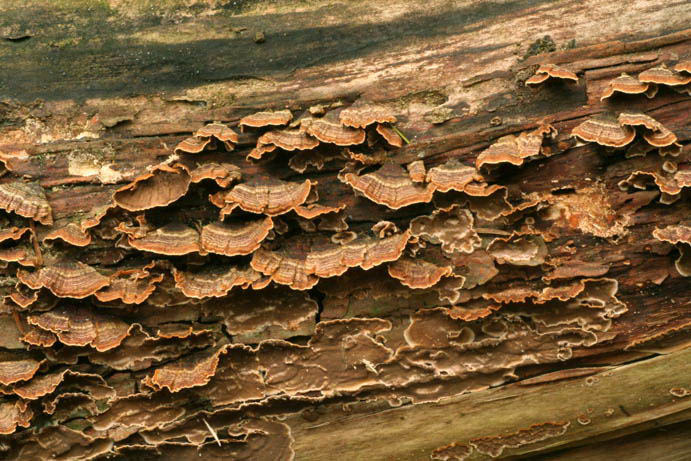
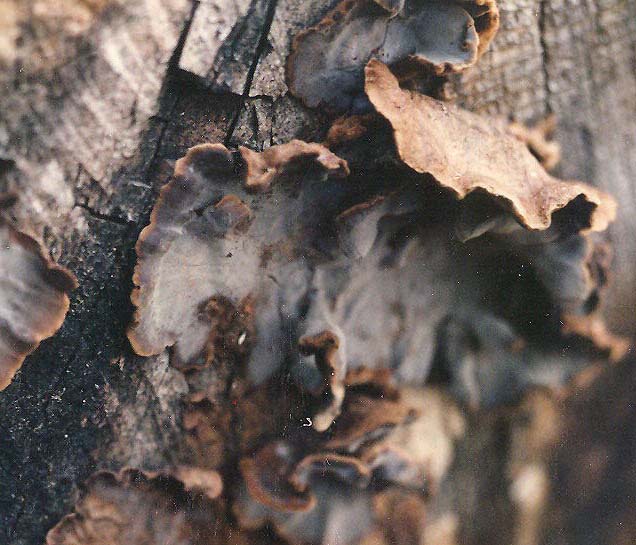
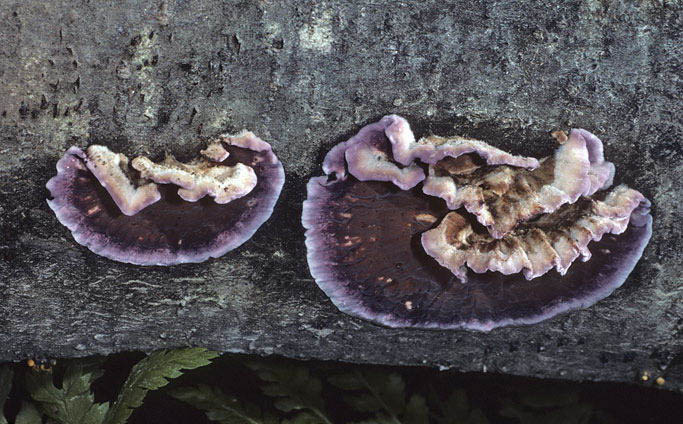
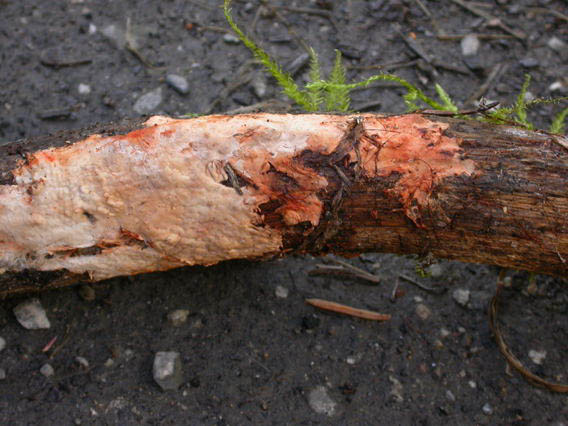
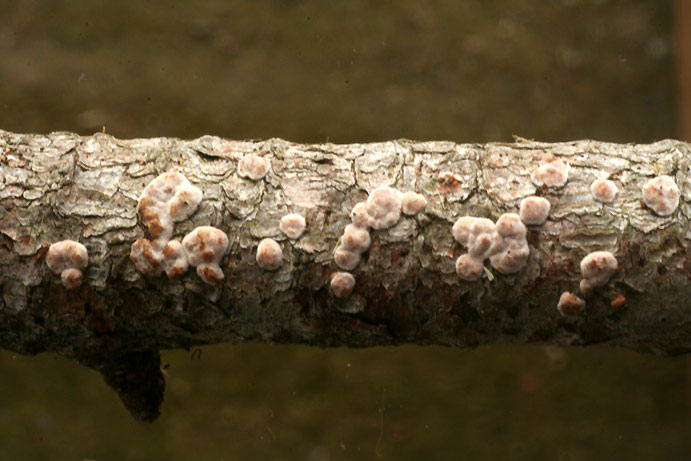
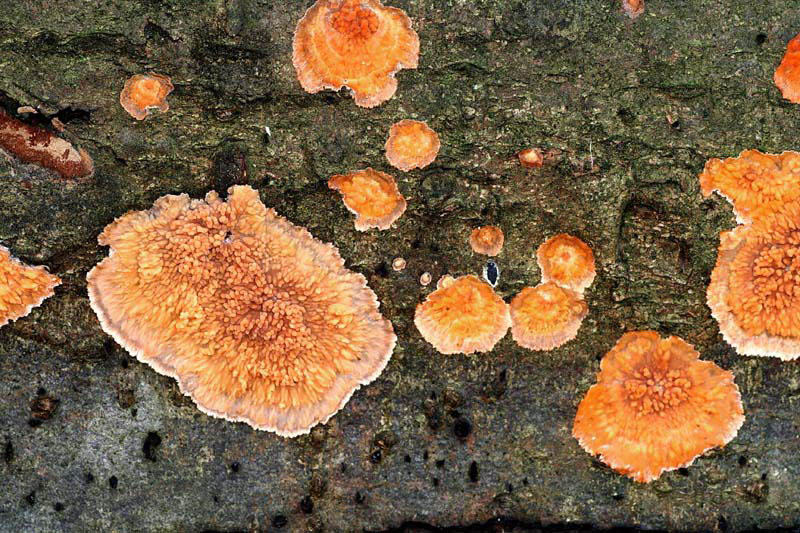
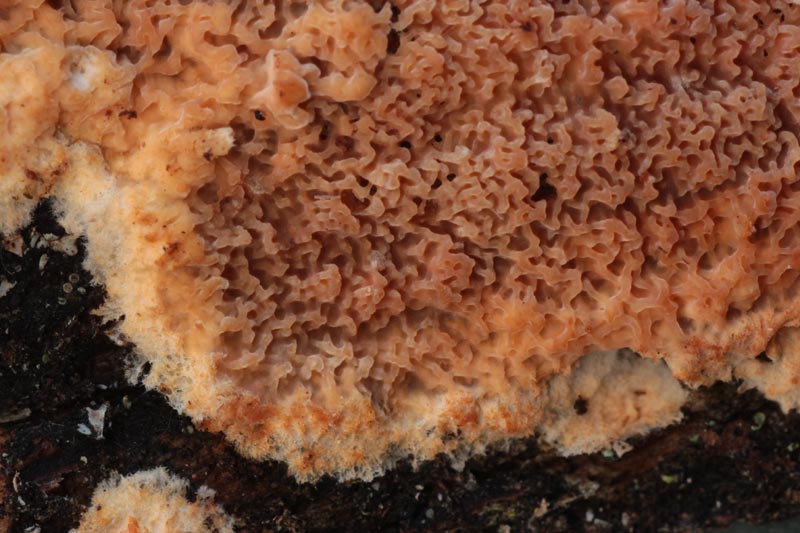
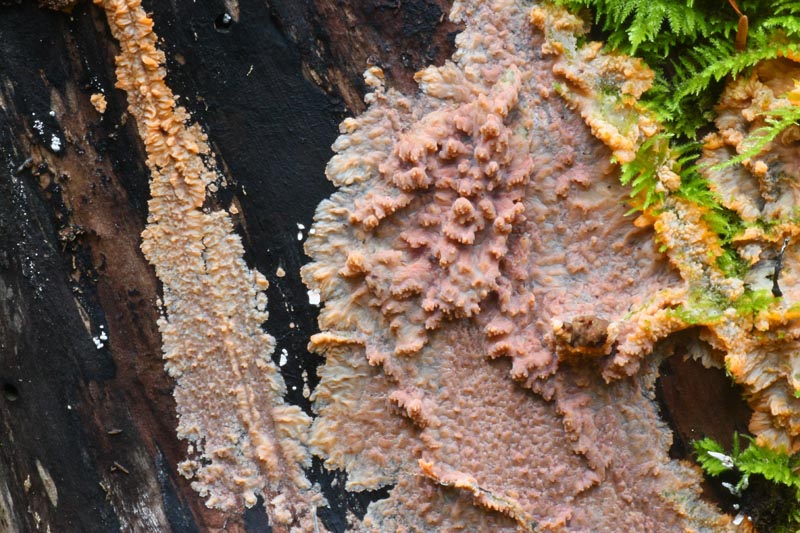
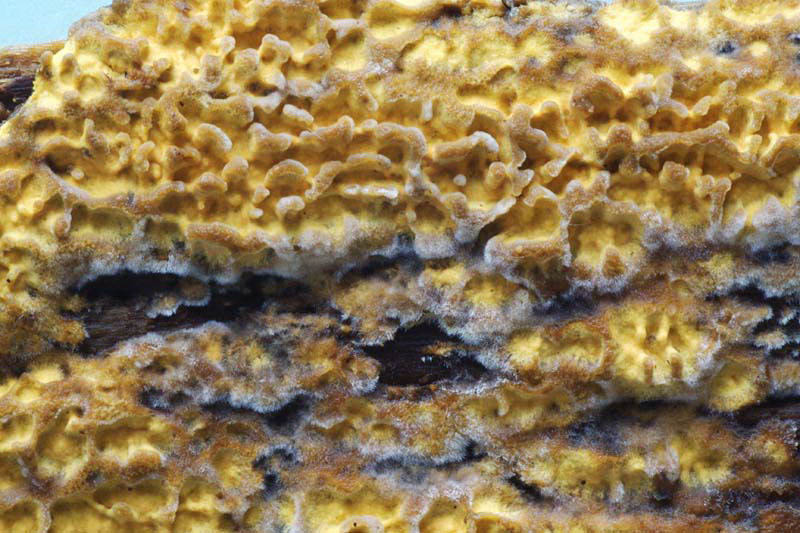
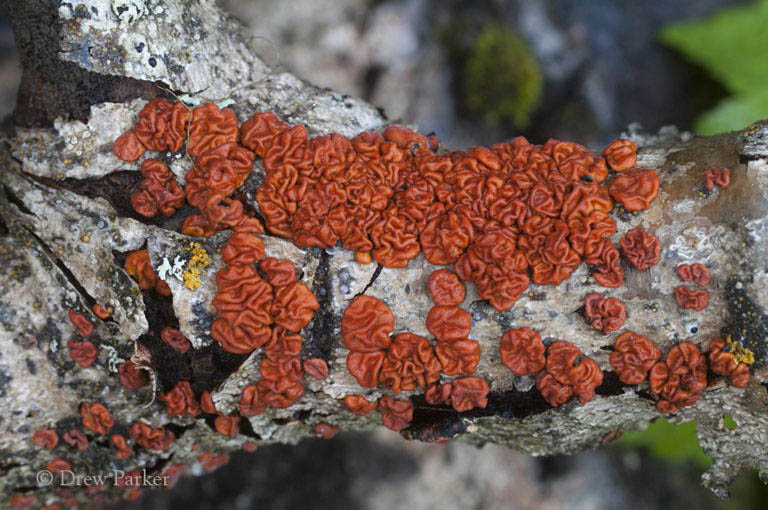
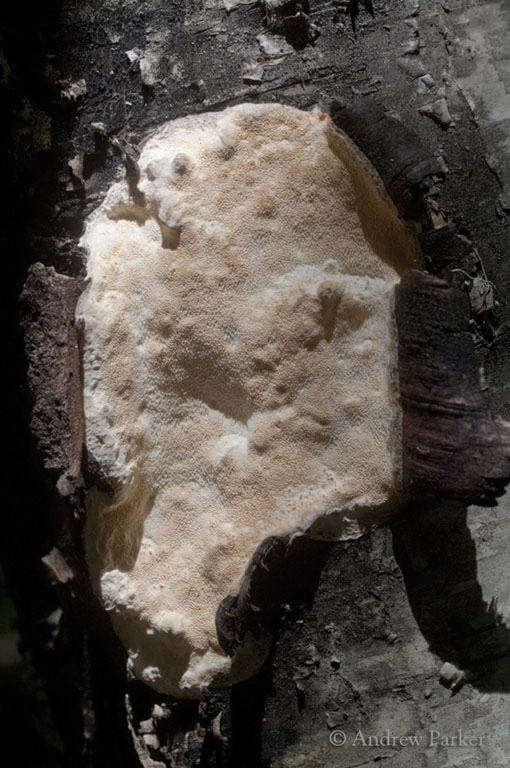
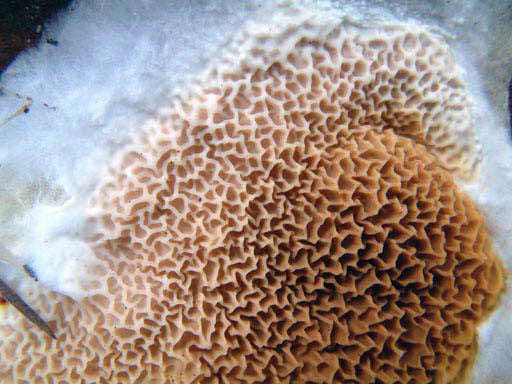
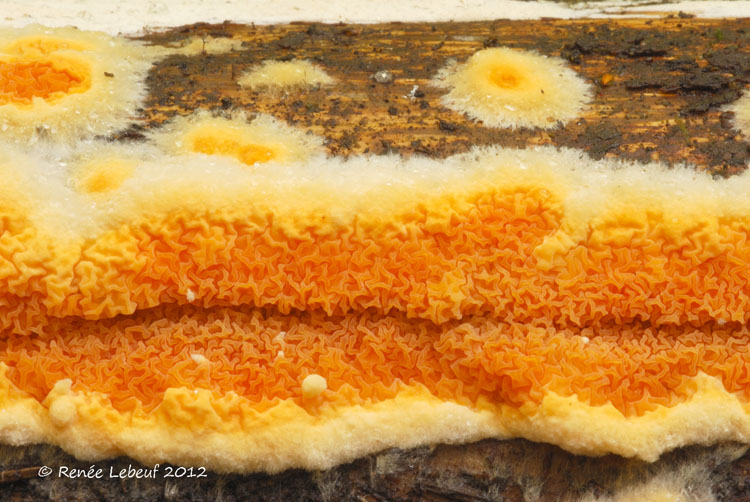
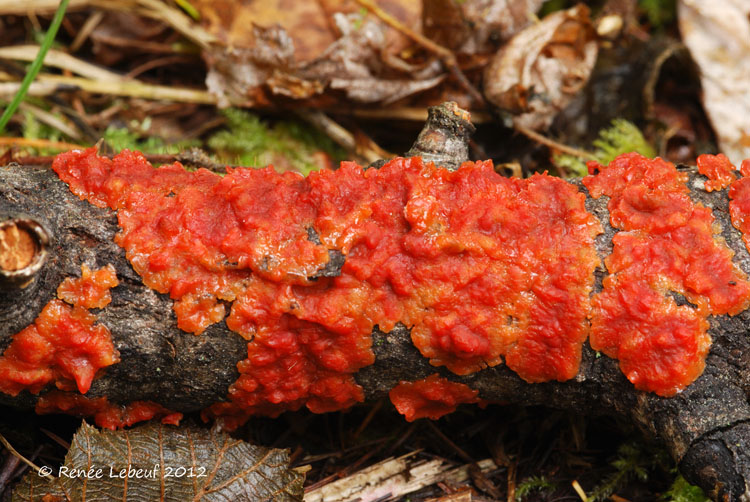
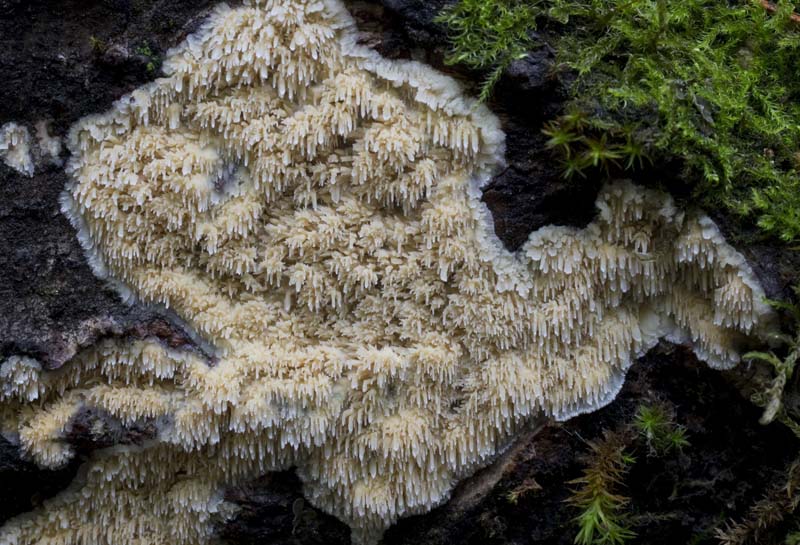
.jpg)
